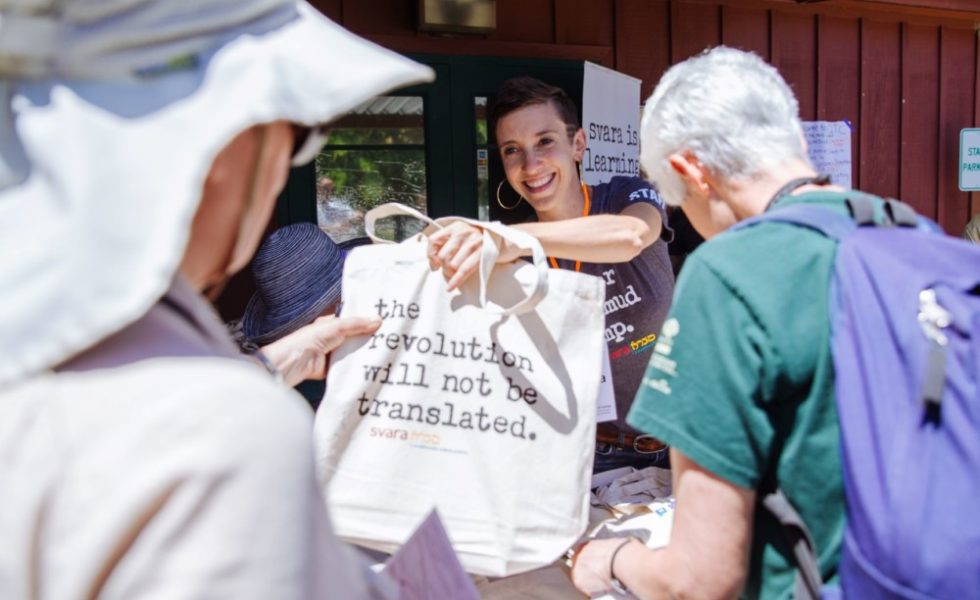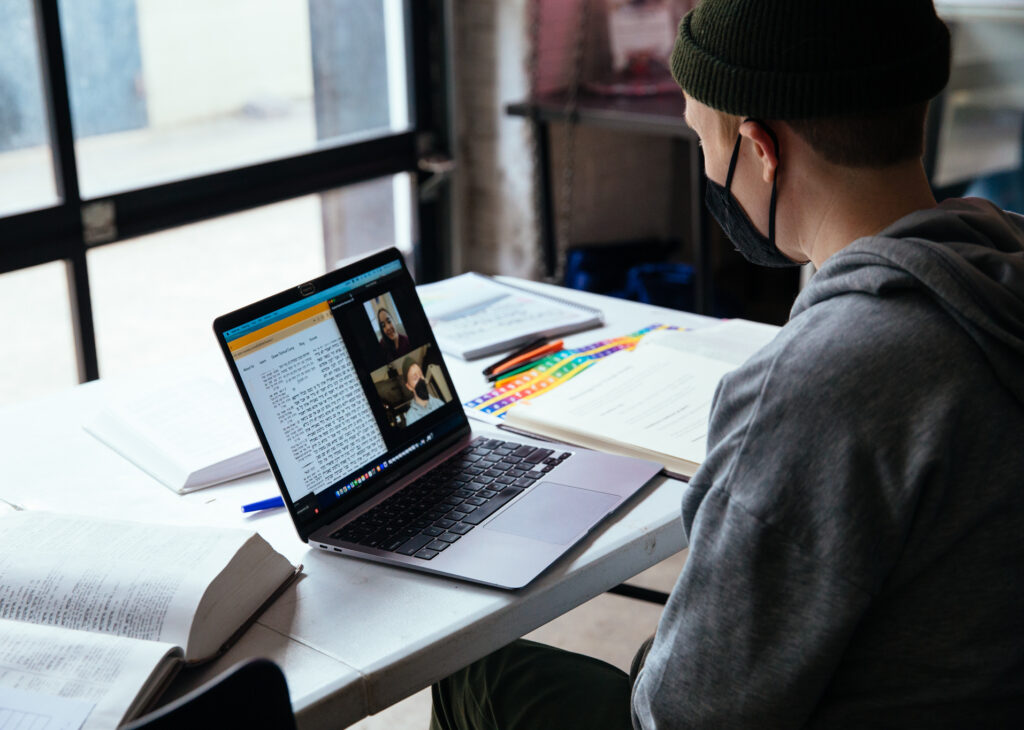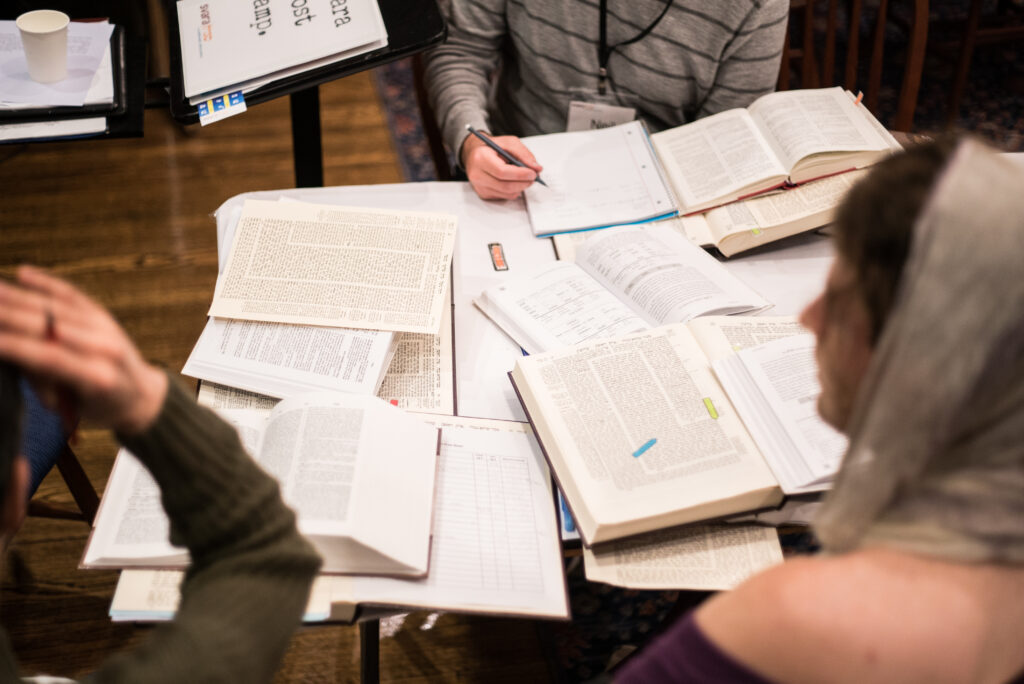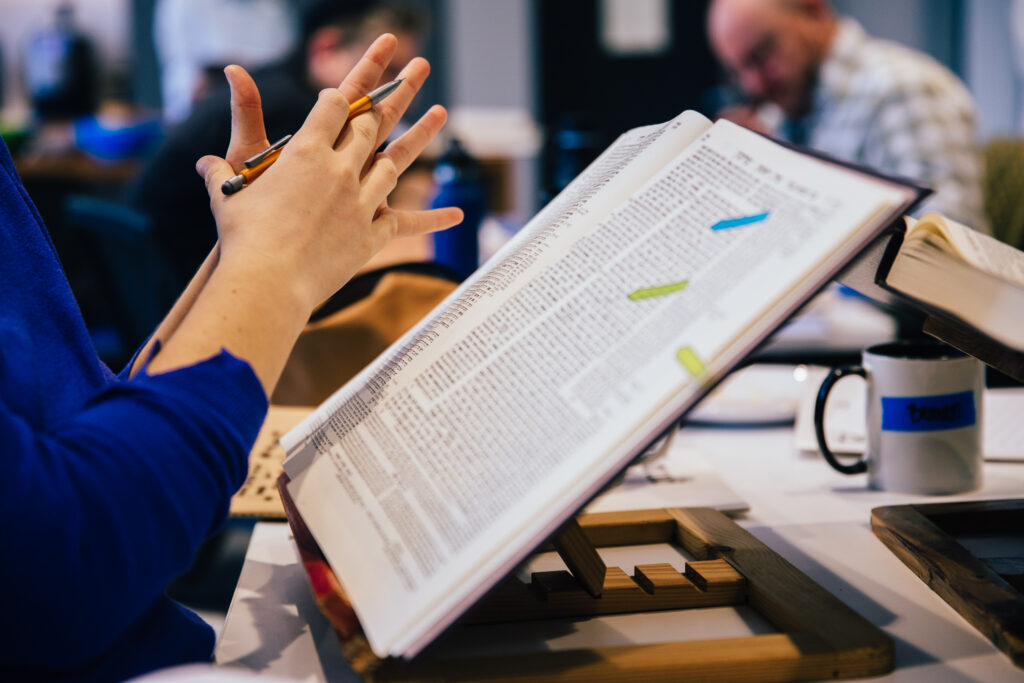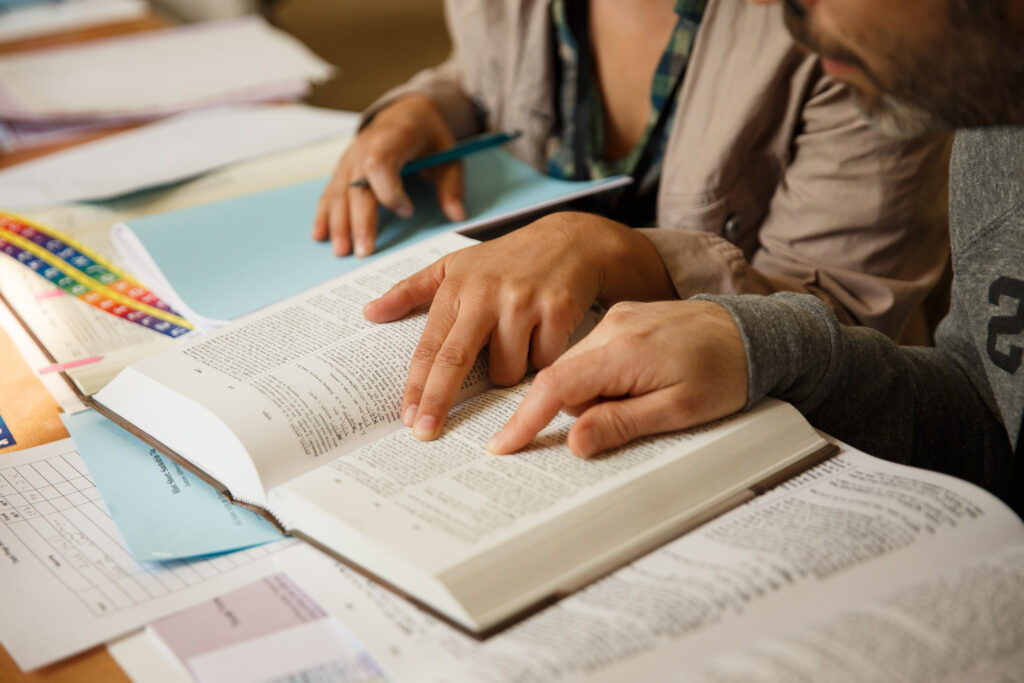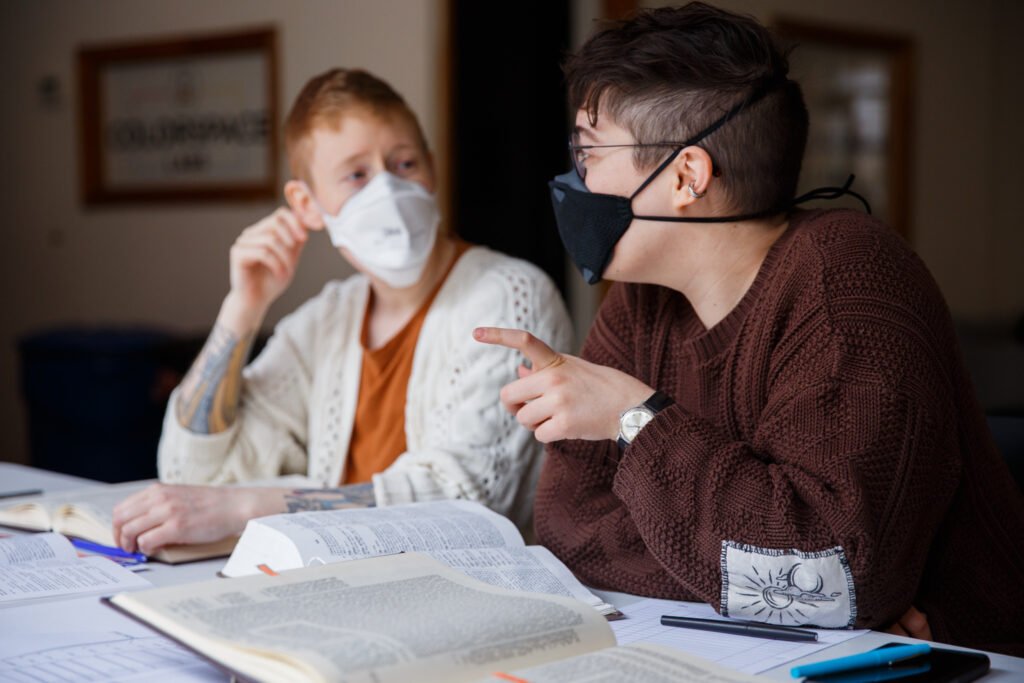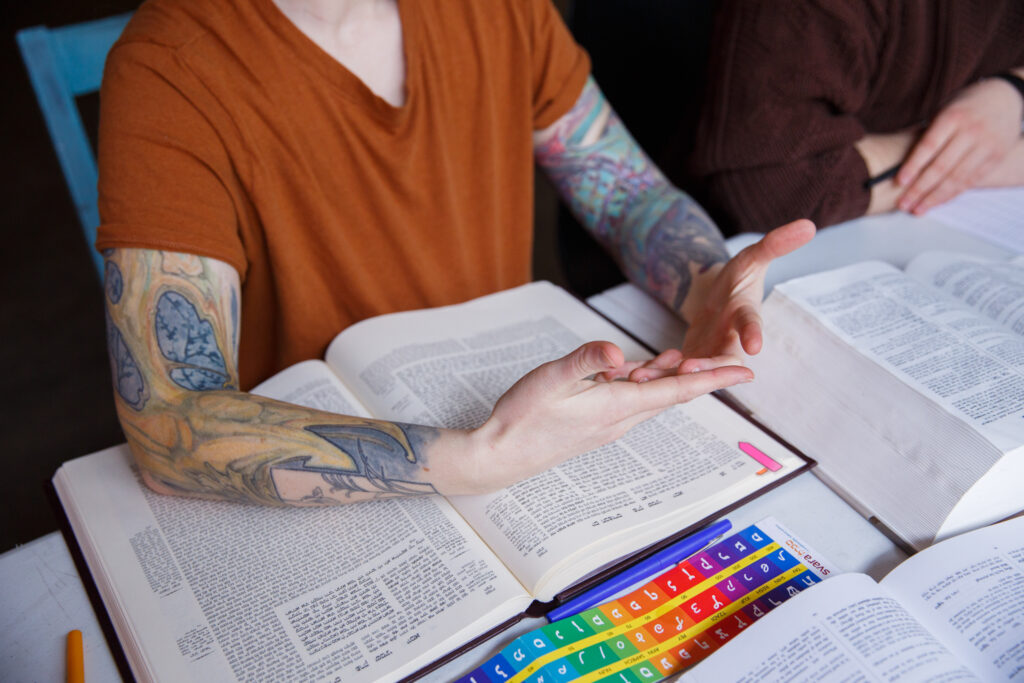Throughout this pandemic, in my learning, in my teaching, and beyond, I keep returning over and over to the same anchoring questions: What does it mean to be a yeshiva during a pandemic? How do we understand our work during a time of upheaval? What is the role of a yeshiva in a revolution?
Several weeks ago at SVARA’s inaugural Queer Talmud Camp: Diaspora Edition, we opened that exploration up to our wider learning community and learned one of the Rabbis’ most quoted texts that provided a powerful playground for this question:
וכבר היה רבי טרפון וזקנים מסובין בעלית בית נתזה בלוד
נשאלה שאילה זו בפניהם תלמוד גדול או מעשה גדול
נענה רבי טרפון ואמר מעשה גדול
נענה ר”ע ואמר תלמוד גדול
נענו כולם ואמרו תלמוד גדול שהתלמוד מביא לידי מעשה
And it happened that Rabbi Tarfon and the elders assembled in the attic of Beit Nitza in Lod. The following question was asked from among them:
Is learning [talmud] greater, or is acting [ma’aseh] greater?
Rabbi Tarfon answered and said: Acting is greater.
Rabbi Akiva answered and said: Learning is greater.
They all answered and said: Learning is greater, as the learning brings [the learner] into the hands of acting.
The Rabbis, who invented the process of talmud, who placed learning at the center of their world, ask each other whether that is really, in fact, the best way that they could spend their days. Tucked away in a secret attic they finally allow themselves to utter their deepest fear, to express their true anxiety over their newly invented system: Is sitting in the bet midrash, learning, really the best use of our time, with everything we know burning around us, as we try to create a more liberated world?
They seem to resolve the question and assuage their anxiety as the sugya ends with the conclusion, “Learning is greater, as the learning brings [the learner] into the hands of action.” But on second glance, it’s not quite that simple. The conclusion of this text screams out “Interpret me!” as so many of our favorite sugyot do. If learning is only better because it leads to action, then isn’t action better? Rabbi Akiva’s position would seem to win the day!
I’ve encountered this text dozens of times (though I’d never learned it in the original until we began exploring it for Queer Talmud Camp: Diaspora Edition!), and each time, this text was brought to explain the emphasis in our tradition on learning, supporting the powerful belief that learning is a transformative tool that can lead to action, and that learning and action, in some cases, can be one in the same.
This is the approach that supports the creation of anti-oppression book clubs or political education, for example, as folks realize that we must learn about harm caused, and build new frameworks in our minds, which will bring us into newly informed and transformed action. When we argue this, we claim, I think, that learning is actually a form of activism, where joining our book club is our first action step. However, as we ask ourselves what it means to invest time, energy, and care into our practice of learning, we should not get confused by this false synthesis. Learning is not the same as doing. Talmud and ma’aseh are not, at the end of the day, the same.We cannot be confused and distracted by the impulse to read this text to justify our learning by claiming that it is the entirety of ma’aseh.
Ma’aseh, at its core, is about transforming material conditions. The results of ma’aseh must be felt, seen, witnessed, experienced; ma’aseh is about acting in and through the world in such a way that it results in a clear change in a lived reality. Is the world actually different as a result of what I just did? How have material conditions changed as a result of my anti-oppression book club? This kind of learning is essential and beautiful, but it must then be put into action. As a student and teacher of talmud, I know that I need to do ma’aseh. And, I know that the only way to authentically do ma’aseh is by learning how to do it better, by learning what is needed, and by allowing deep learning to inform what I do. BUT the powerful hiddush, the innovation, of the resolution in our sugya, is not only to say that learning is greater because it deepens our action. I think there is something even more to it than that.
My read of this text was transformed when I brought it into conversation with another piece of holy text that has stirred me up from the great Sage of our time bell hooks about the process of learning and why it matters:
The academy is not paradise. But learning is a place where paradise can be created. The classroom, with all its limitations, remains a location of possibility. In that field of possibility we have the opportunity to labor for freedom, to demand of ourselves and our comrades, an openness of mind and heart that allows us to face reality even as we collectively imagine ways to move beyond boundaries, to transgress. This is education as the practice of freedom.
-Teaching to Transgress
When we bring in bell hooks as a rishon, as a commentator on our sugya, we see that it’s not that learning is where you go to figure out how to do ma’aseh. Learning doesn’t inform ma’aseh, at least not only. It’s that learning is where you practice ma’aseh—education as the practice of freedom—learning in which we embody freedom, to know freedom in our selves, in our bodies, in our hearts.
In the bet midrash, we don’t learn about accountability, interdependence, and radical empathy by reading about it together and then bringing our learnings out into the world. We practice it in our chevruta relationships. We don’t learn about how to be more loving, and then leave the bet midrash to bring our insights about love into the world. We practice love in our learning space when we celebrate each other and embody a space that loves each other into loving the tradition and ourselves. Liberatory learning is not what we learn about, but how we learn. The bet midrash is not a place where we go to learn about something so that we can bring that knowledge out into the world. Instead, our learning spaces are where we practice the freest forms of who we are, and the world we want to create. When we learn like that, that’s the Talmud that brings [the learner] into the hands of action.
And if that’s how we’re learning, if we’ve done it right, then there’s no way we won’t change the material conditions and reality of the world.
As we continue to move into the season of Elul, in which we imagine who we want to be, how we want to be most aligned with our values and commitments, and how we want to accountably reground ourselves in who we are, may we find glimmers in the bet midrash of our freest selves as we practice who we want to be.

